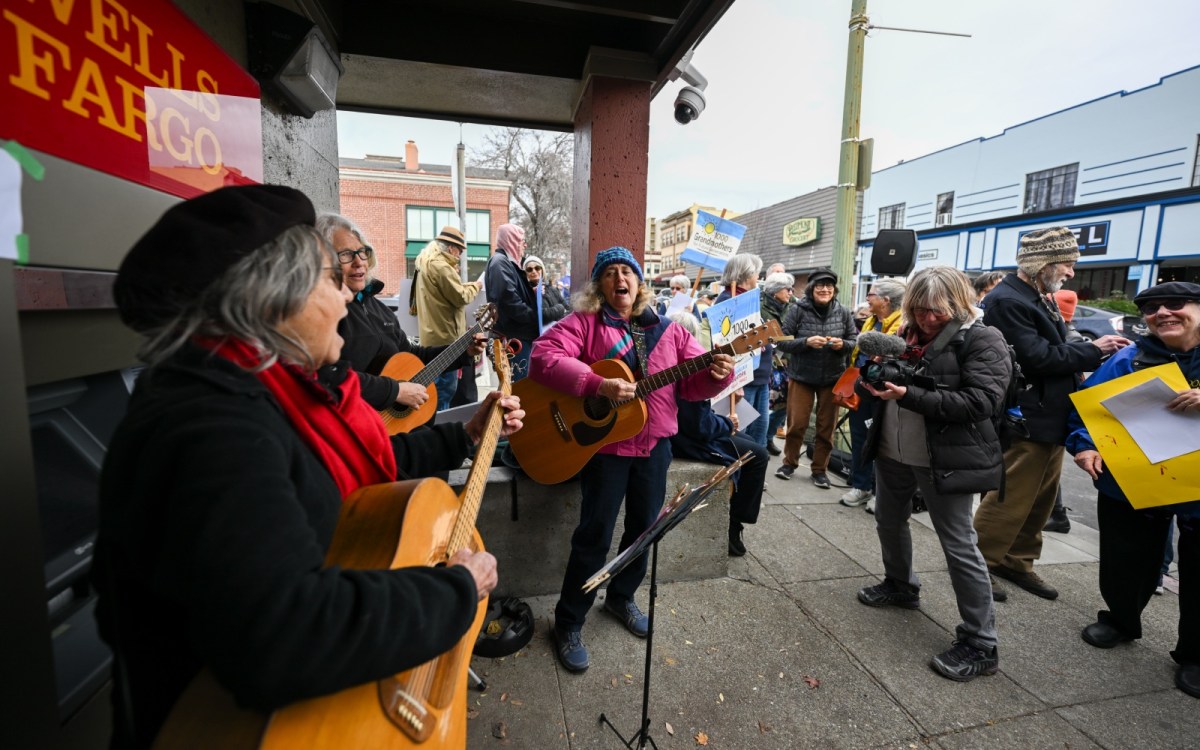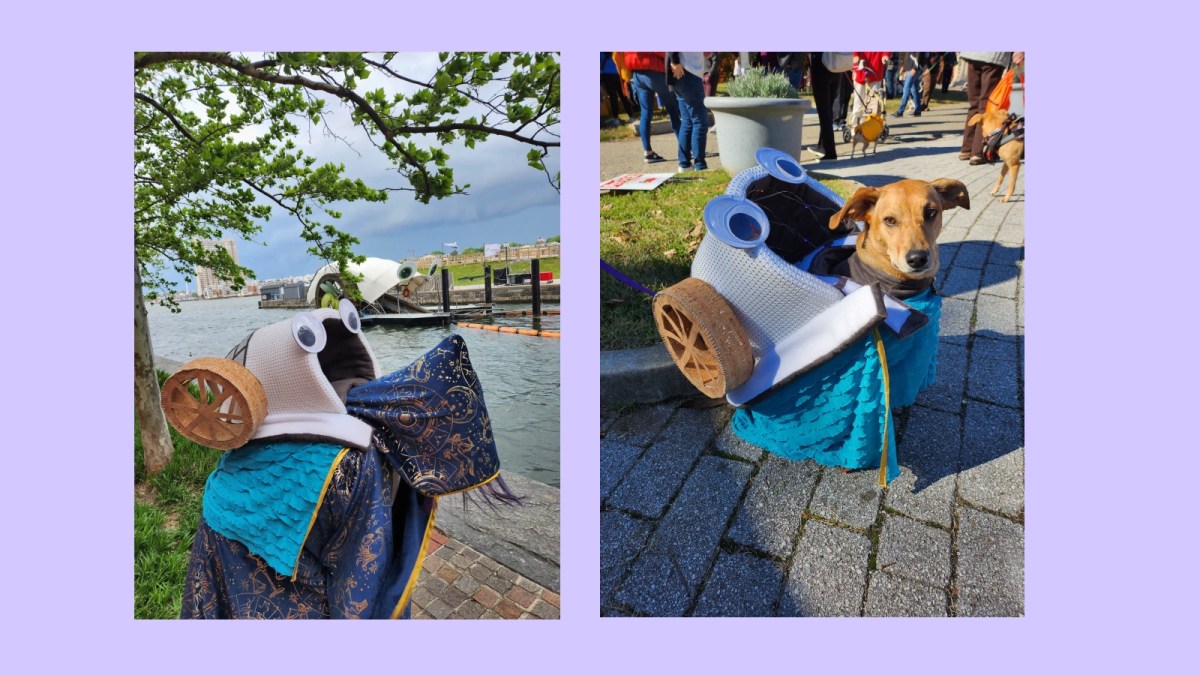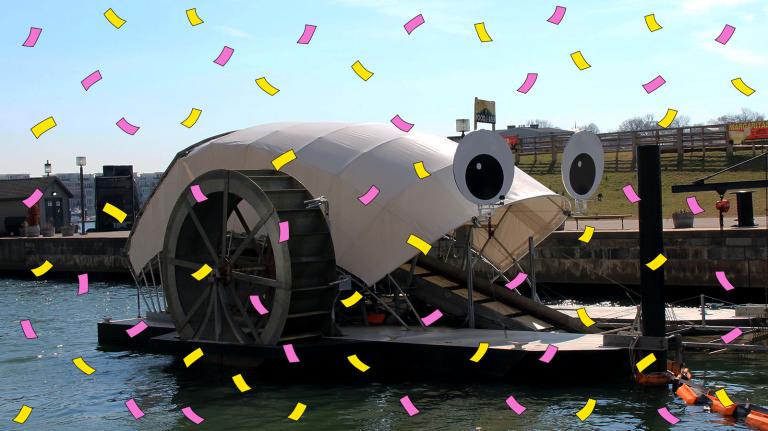And don’t forget to RSVP for our next book club! Register by tomorrow for the chance to win a free copy of Braiding Sweetgrass.

The vision
I’m on all fours in the orchard soil, my head tilted in hopes of amplifying the sounds coming from my pongamia shoots. Their slight droop and seeming wistfulness tell me they’re not getting quite what they need. I adjust my florameter toward the stems — and there it is, that anxious popping, a sign of distress.
Admittedly, I don’t know what they’re saying. But if I can find out and help this orchard thrive, their beans will become oil, will become food and fuel that will serve as the basis of this community’s carbon-negative grid system. So I’ll keep on listening.
— Listening to the trees, a drabble by Camilla Sterne
The spotlight
Hey, everyone! This week, we’re sharing another mailbag — a collection of some thoughtful messages we’ve gotten from readers over the past several weeks.
Today’s drabble was submitted by reader Camilla Sterne. She was inspired by pieces she had read about the sounds plants make when they’re in distress, and the potential benefits of a particular tropical tree that could offer an alternative to palm oil and soy.
We love reading drabbles from y’all. Please feel free to send ’em our way anytime, on any topic. And we also love to hear your feedback, questions, and personal takes on the stories we cover. Below, we’ve gathered some standout responses to our recent issues — many thanks to the folks who shared!
![]()
Building better
Our newsletter about climate-resilient and efficient buildings resonated with one reader in the Pacific Northwest, who shared some interesting food for thought about evolving building standards and renters’ rights.
![]()
I’m in Portland, Oregon, and we are routinely seeing summer heat in the 90s and low 100s — numbers that were historically unheard of in the area (or at least rare). Something that has come up recently for us that I would be interested in hearing more about is solutions for renters and the responsibilities of landlords with the impacts of climate change.
We recently reached out to our landlord to see if we could support installing a wall-mounted heat pump to support the high-ceilinged and un-air-conditioned apartment — our unit regularly sits above 80 degrees in the summer with installed blinds and a portable air-conditioning unit. The company landlord refused, citing that the device could impact the building’s LEED certification and left it at that. While incredibly frustrating as the individual living in rented space that the landlord didn’t seem to mind leaving an uncomfortable temperature, it got me thinking about the responsibilities landlords or building owners may have around existing building infrastructure (LEED or passive-house certification) with an adjusting climate.
With buildings that were built years ago and met environmental or building standards of the time, should a changing climate require adjustments to what those certifications or standards look like? Would this be something that would need to happen at the national level — adjusting LEED-style certification standards and guidance, or would these be state-focused efforts to influence the responsibilities of landlords and building owners? If buildings in Oregon were historically designed around high temperatures in the 80s, and now regularly see extended periods of temperatures in the 90s and low 100s, it seems there should be expectations to adjust how older buildings are assessed. Is this something that truly falls to renters? It can’t all fall on a renter to address these concerns … as an example, our passive house has windows that only tilt out, so installing an AC unit leaves a significant space for warm air to rush in. And so ultimately cooling the space falls to a building landlord/owner.
Not sure where this conversation starts, or goes, but wanted to bring it up!
— Robert Quinn
More more exposure
- Shortly after our newsletter on green buildings, Grist published this illustrated piece exploring the unique problem of landslides, and the difficulty homeowners often have receiving assistance for the damage they cause.
- We have also looked at the topic of building codes, and how they could be used both for climate mitigation and resilience.
- Vox offers some ideas for how renters can maximize the efficiency of their spaces and participate in broader green-building initiatives.
- In L.A., a tenants’ rights org called Strategic Actions for a Just Economy is working to ensure that the city’s decarbonization plans go hand-in-hand with tenant protections, Nonprofit Quarterly reports.
![]()
Gray hair, do care
In response to this Q&A with a member of Third Act, a climate advocacy organization for people over 60 that recently staged a day of action against big banks, we heard some super sweet feedback from folks of all ages.
![]()
The Third Act org is so awesome to hear about! I’m used to hearing about youth climate movements and it’s really nice to know that elders back us up, too — and that we can work together for a future for everyone.
Incidentally, I’m from Oakland so the parting shot image is awesome. I think I even recognize one of my music teachers from elementary school in the picture! So happy to see my community represented in the newsletter for our activism.
— Ruby Foxall

The aforementioned parting shot, which shows a demonstration outside a Wells Fargo bank in Oakland, California, staged by the group 1000 Grandmothers. Anadolu Agency / Getty Images
![]()
My wife and I are very concerned about an overheated planet. I am a retired scientist who has closely followed climate science and impacts. Our G children will live in a dangerous, hot world. We want to change the curve.
— William Haaf
![]()
We’ve been yelling at our bank for years!
— John Thompson (my dad) (who later clarified he is not, in fact, yelling at anyone)
More more exposure
- For Earth Day, a Third Act chapter in Maine held a used-bike sale, rally, and petition drive, local news site The Republican Journal reports.
- Bill McKibben included a portion of our Q&A in his newsletter, the Crucial Years — which is well worth a subscribe, if you’re not already on it.
![]()
Working less — for the planet
Our newsletter about the four-day workweek got a lot of folks talking (including many of my Grist colleagues!). We asked y’all what you would do with an eternal three-day weekend — here are a couple of ideas.
![]()
If I had a three-day weekend, I’d start self-studying Japanese again. I had to stop after picking up a second job, but I had a monthslong streak going. I’d also try to meditate for a few hours and go on a bike ride.
— Questen Inghram
![]()
I, for one, would never go back to the office. I do not own a car, but still, I use a lot less public transport (which still has its emissions) now that I am working from home. And I already see the benefits of having more time at home for myself and my family.
If I had a four-day workweek, I would most probably travel a bit more (but inside the country) by train or coach. Now, I have probably three to four travels a year inside the country — I would add two or three more, because there are a lot of historical sites and natural parks that I want to visit, but it takes longer to get there without a car. I would also have a lot more time to go outside for walks and photograph flowers, also for watercolor painting and pencil drawing, reading and more frequent visits to the library, knitting … :)
— Mihaela from Bulgaria
More more exposure
- This week, a second trial of the four-day week launched in Ireland. Meanwhile, in the U.K., public service workers in one of the country’s largest trade unions are advocating for reduced working hours.
- Two Massachusetts lawmakers introduced a bill to initiate a two-year trial of the four-day workweek, offering a tax incentive to participating employers.
- Salon examines some of the health benefits of the four-day week, including potential emissions reductions.
On our horizon
This spring, by popular demand, the Looking Forward book club is reading Braiding Sweetgrass, by Robin Wall Kimmerer!
Our gathering will be Wednesday, June 7, at 6 p.m. Eastern. RSVP by tomorrow, May 4, if you’d like to be entered into a drawing to win a free copy of the book!
A parting shot
In last week’s newsletter about Mr. Trash Wheel, we included a photo of Julia, a new member of the Order of the Wheel — a volunteer group dedicated to trash cleanup, with fun costumes and secret society vibes. She responded to share a couple more pics of her homemade ensemble, part of which originated as a Halloween costume for her adorable dog, Ellie. We have no choice but to stan.



